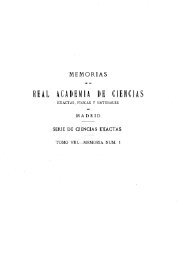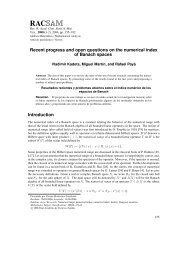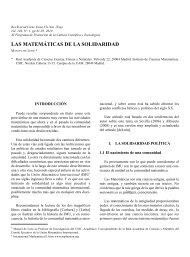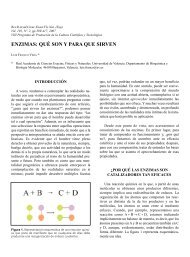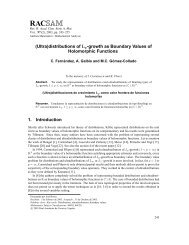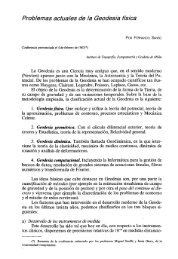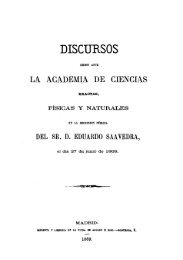The water footprint and virtual water exports of Spanish tomatoes
The water footprint and virtual water exports of Spanish tomatoes
The water footprint and virtual water exports of Spanish tomatoes
- No tags were found...
Create successful ePaper yourself
Turn your PDF publications into a flip-book with our unique Google optimized e-Paper software.
D. CHICO et al. 9the volume <strong>of</strong> fresh<strong>water</strong> used to produce the product, measuredalong the full supply chain. It is a multi-dimensionalindicator, showing <strong>water</strong> consumption volumes by source<strong>and</strong> polluted volumes by type <strong>of</strong> pollution; all components<strong>of</strong> a total <strong>water</strong> <strong>footprint</strong> are specified geographically <strong>and</strong>temporally (Hoekstra et al., 2009). <strong>The</strong> blue <strong>water</strong> <strong>footprint</strong>refers to consumption <strong>of</strong> blue <strong>water</strong> resources (surface <strong>and</strong>ground<strong>water</strong>) along the supply chain <strong>of</strong> a product. ‘Consumption’refers to loss <strong>of</strong> <strong>water</strong> from the available groundsurface<strong>water</strong> body in a catchment area. This fraction thatevaporates is incorporated into a product, or returns to anothercatchment area. <strong>The</strong> green <strong>water</strong> <strong>footprint</strong> refers toconsumption <strong>of</strong> green <strong>water</strong> resources (rain<strong>water</strong> stored inthe soil as soil moisture). <strong>The</strong> grey <strong>water</strong> <strong>footprint</strong> refers topollution <strong>and</strong> is defined by the volume <strong>of</strong> fresh<strong>water</strong> thatis required to assimilate the load <strong>of</strong> pollutants to meet existingambient <strong>water</strong> quality st<strong>and</strong>ards.<strong>The</strong> present study analyses the <strong>water</strong> <strong>footprint</strong> <strong>of</strong> tomatoproduction in Spain. In particular, it focuses on the green,blue (surface <strong>and</strong> ground<strong>water</strong>) <strong>and</strong> grey <strong>water</strong> <strong>footprint</strong> <strong>of</strong>tomato production in the different <strong>Spanish</strong> provinces. Differenttypes <strong>of</strong> tomato production systems are analysed:open-air (irrigated <strong>and</strong> rainfed) <strong>and</strong> greenhouse. For each<strong>of</strong> them, the respective <strong>water</strong> <strong>footprint</strong> was studied in thedifferent times <strong>of</strong> the year; early, middle <strong>and</strong> late season.To complete the analysis <strong>of</strong> the tomato sector with a socioeconomicperspective, evaluations <strong>of</strong> apparent <strong>water</strong> productivity(€/m 3 ) <strong>and</strong> <strong>virtual</strong> <strong>water</strong> <strong>exports</strong> <strong>of</strong> tomato are alsoreported.2. METHOD AND DATA<strong>The</strong> present study estimates the green, blue <strong>and</strong> grey <strong>water</strong><strong>footprint</strong> <strong>of</strong> 1 kilogram <strong>of</strong> tomato fruit produced in Spain



